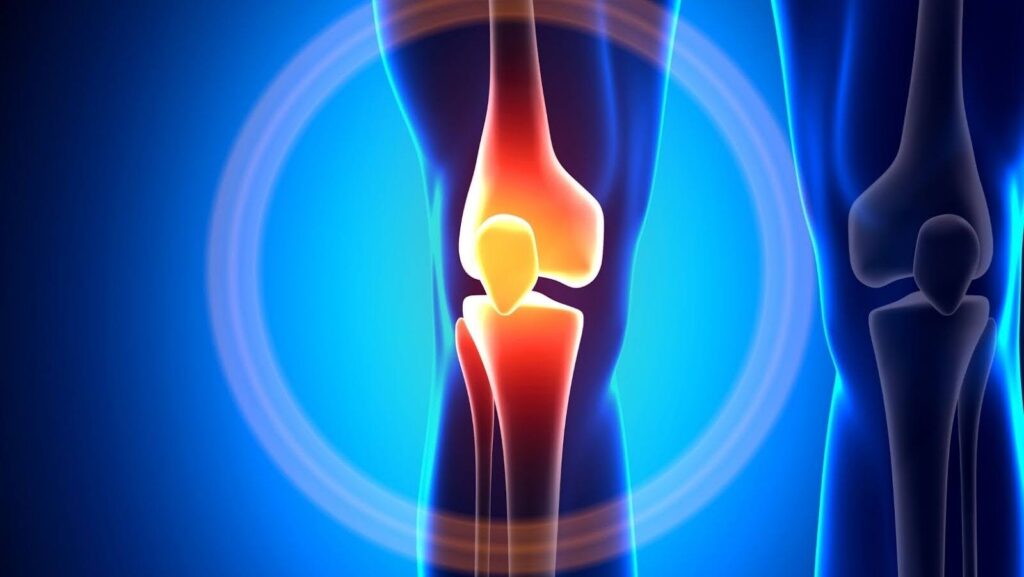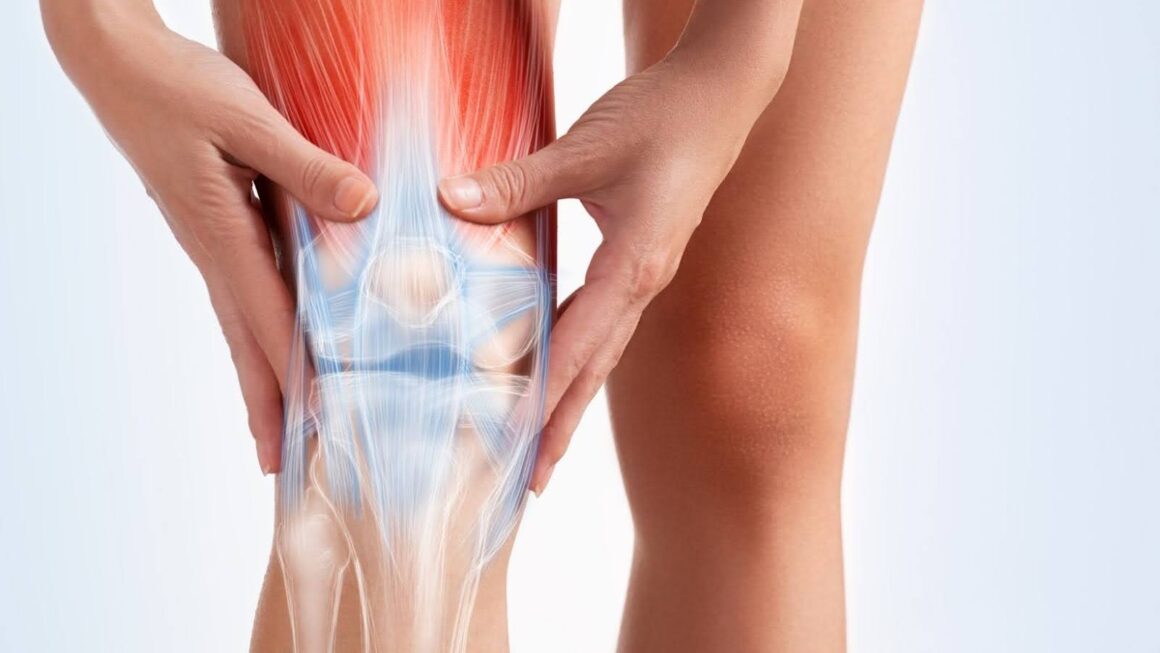
Knee pain is a common and severe problem that affects millions of people worldwide. Due to injury, arthritis or just normal wear and tear over time, persistent knee pain can greatly impede movement and quality of life. For years, treatment has largely revolved around medication, physical therapy and, in severe cases, surgery. But the ground is changing rapidly. Today, with the power of data-driven technologies and digital innovation, there is unprecedented momentum in how we diagnose, treat and manage knee pain. The convergence of technology and therapy has ushered a new era of personalized, convenient and extremely effective care — one in which data takes center stage to help patients get moving again, pain-free.
The Rising Influence of Data in Healthcare Today
Modern medicine is not forced in hospital walls or the boundary of traditional therapy sessions anymore. Now, with the addition of data analytics, AI and wearable technology, healthcare providers are able to obtain minute-by-minute information from a patient — using platforms like that classify each type of health information based on clinical need. This personalized method enables clinicians to move away from generalities and instead provide personal care plans, depending on individual patterns and behaviors along with biological responses.
In the world of knee pain, these have been game-changers. Doctors and therapists can now monitor how a patient walks, bends or extends an arm post-surgery — all through motion sensors, smart wearables and mobile health apps. The end product is a better picture of how the knee operates on a day-to-day basis, which allows for quicker and more precise diagnosis. Data can also predict outcomes, shorten recovery times and avert future injuries by signaling risky movements or patterns of stress before they result in injury.
AI and ML in Knee Pain Diagnosis
Artificial intelligence has changed the way doctors evaluate joint health. Traditional imaging techniques, including X-rays and MRIs, are informative — though often subjective when interpreted by humans. The first AI-powered software to analyze the scans can now do this with uncanny accuracy, spotting tiny areas of tissue damage or early signs of arthritic degeneration that are invisible to the human eye. By analyzing data from thousands of patient histories, these systems can identify patterns and suggest more effective treatments.

Machine learning algorithms also contribute to recovery prognosis. For example, based on a patient’s age, medical history and progress in rehabilitation, predictive models can gauge how quickly he or she will respond to particular therapies. This not only allows doctors to personalize treatment plans, but also enables patients with a quantifiable view into their own recovery process. This is where such technology becomes incredibly valuable, and you’ll find it in modern practices at a place like Clifton Knee Pain Treatment where data led decisions dictate every aspect of treatment from the initial diagnosis to guided rehabilitation.
Role of Wearable Devices and Real-time Monitoring
Wearable devices are among the most promising advances in knee pain treatment. That these such sensors can be worn around your knee, built into clothing or affixed to rehabilitation equipment. They monitor various metrics, from joint rotation to pressure and muscle activity, and send the data to a connected app or cloud platform.
The data can be tracked by therapists in real time, even from a distance. That means people recuperating from knee surgery (or injury) no longer have to come to the clinic so regularly for checkups. Instead, clinicians can remotely assess progress and modify exercise programs or level of therapy accordingly. For the patients, this is a convenience and they can be comforted that they are being continually checked to get them back on their feet quicker.
Additionally, historical data can pin-point trends that may indicate possible problems. For instance, a wearable device might detect that a patient’s gait has developed an asymmetric rhythm or that one of their knees isn’t bending in the correct manner; in such cases, a therapist can intervene early to address the issue before it becomes more acute.
Evidence Based Physical Therapy: Precision in Motion
Conventional physical therapy tends to depend on observation and patient feedback, both of which work well but are subjective. By adding data analytic and 3-D motion capture capabilities, therapists are now armed with exact biomechanical information. The more advanced rehabilitation systems rely on sensors and cameras to record how a patient moves in the course of each exercise, providing real-time visual feedback.
This closed loop enables both the therapist and patient to know precisely what movements have room for improvement, helping patients safely and successfully regain mobility. The information helps objectively monitor progress — therapists can track gains in range of motion, strength and stability down to precise degrees or percentages. This kind of precision gives patients the rights to their own recoveries – readings on recovery progress should definitely be included in during exercise – this increases motivation exponentially and is documented-proof based.
The Potential of Proactive Care
Talbot for The New York Times Data isn’t only being used to help treat knee pain that already exists. It’s also helping to prevent it. Predictive analytics models use aggregated data from multiple sources including electronic health records, wearable devices, and lifestyle data to determine the individual risk of developing knee-specific conditions. This can enable early identification of degradation in cartilage or movement deficits well before symptoms are manifested.
With that information, doctors might advise patients to either do targeted exercises, maintain a healthy weight or even tweak their workstations so as to delay or escape chronic knee pain altogether. This proactive focus represents a dramatic pivot from reactive care to preventive health — and one that’s powered by data.
Virtual Rehabilitation and Teletherapy
While a silver lining of the COVID-19 pandemic was telehealth’s rise, its long-term benefits are becoming clear in places like knee pain rehab. Virtual therapy sessions, driven by data and technology, have made it more possible than ever for patients to tap an expert’s guidance from wherever they are. Using online platforms, video assessments and A.I.-assisted instruments, therapists can assess movement quality and create customized exercise programs remotely without meeting in person.
Furthermore, some innovative rehab platforms have now begun to integrate gamification and virtual reality (VR) to make therapy fun. Patients are able to move themselves guided by the virtual environments in interactive scenarios that replicate real-life activities, and the system records motion data for accuracy. These innovations not only get the job done, but they also help to take the fear and intimidation out of rehabilitation while adding a dose of fun.
Robotics and Smart Assistive Devices Integration
Knee Pain Treatments Another revolutionary development in the treatment of knee pain is robotic-assisted therapy. Intelligent robots exoskeletons and rehabilitation robots can offer personalized resistive support to the movements. They adjust to the strength and mobility of each patient in real time based on feedback. This customized training will lead to steady progression and reduce the risk of injury or over exertion.
When robotics is used alongside AI and physical therapy concepts, clinicians can develop regimens that improve muscle coordination, restore joint stability and accelerate functional recovery. This technology is especially beneficial to patients who are rehabilitating from knee surgeries or serious injuries, as it enables them to restore their self-esteem and independence at a rate never before possible.
Challenges and the Road Ahead
The potential of integrating data and technology into therapy is very exciting, but not without its challenges. Protecting patient privacy and data security also continues to be a top issue when more digital health information is collected and stored. Furthermore, not all clinics or patients have the same level of access to high technology availability because of economic or geographical factors.
But as stream tech evolves, access is getting easier. With the price point of wearable devices dropping and mobile health apps and cloud analytics becoming more entrenched, both clinics and patients are better equipped to consume data-driven care. As technology increasingly reaches the masses, it will only play a more central role in managing knee pain bringing personalized, precise and proactive care to millions of people around the world.
A New Era of Healing
The intersection of technology and therapy has expanded what’s possible in health care. Innovations that are driven by data have been providing physicians with a more detailed picture of how the knee works, and how it responds to treatment, and empowering patients to get wise about their own bodies. This integration of science and human care is promoting a more cohesive, informed and efficient method to managing pain.
Whether it’s AI reviewing joint scans, wearable sensors monitoring movement or predictive analytics stopping a future injury in its tracks, one thing is clear: the future of knee pain treatment will be smarter, faster and more patient-oriented than ever. Clinics that are open to these technologies – for example, those focusing on Clifton Knee Pain Treatment – are now at the forefront of this change… and thus already showing us that medicine is no longer just reactive, but smartly proactive.
Conclusion
The bridge between technology and therapy is not simply a scientific evolution, it’s a human one. Each datum we collect, each algorithm we train and each patient we monitor moves us closer to truly personalized medicine. In the world of knee pain treatment, data-driven advancements are bringing new causes for optimism: trading guesswork for accuracy, and solitary care for connected care. And as technology marches forward, the relationship between data and therapy will only grow, so that recovery isn’t just about digesting pain but about arming against it; not merely healing, but flourishing. The future of knee fitness is data-driven, patient-centric and full of promise, and it’s already here.










